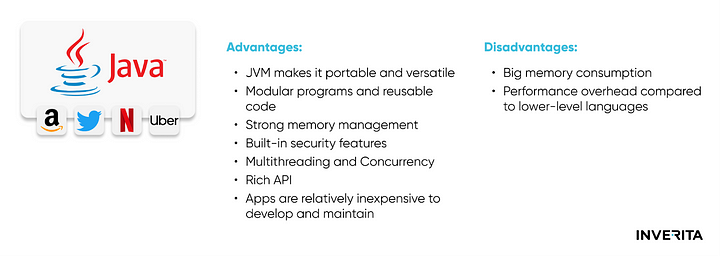Ionic is an open-source AngularJS-based framework that leverages such web technologies as JavaScript, CSS, and HTML5, using modern web APIs. Ionic has ready-made UI components and typography that help to create attractive user interfaces and seamlessly integrate with a number of frontend frameworks such as Javascript, Angular, React, and Vue giving your team members an opportunity to choose their favorite stacks.
What to Consider When Choosing the Best Technology Stack for Mobile App Development?
Project Size
Accurate estimation of software projects plays a crucial role in selecting the optimal technology stack for a mobile application, which depends on the project's complexity. Projects can generally be categorized as small, medium, or large, each with its unique requirements.
1. Small projects, such as MVPs (minimum viable products) or single-page applications, are typically simpler in nature. For these projects, Flutter emerges as an excellent choice due to its user-friendly nature, ease of use, and cost-effectiveness. It is well-suited for apps that don't require high-load capabilities.2. Medium-sized projects, such as enterprise applications and online stores, demand more than a single framework for implementation. These apps often possess a broader range of features, requiring a technology stack comprising multiple layers and combinations of languages to accommodate the complexity.3. Large projects, including marketplaces like eBay, social networks like Facebook, and enterprise resource planning systems, require a diverse set of programming languages and frameworks. These projects necessitate enhanced scalability, speed, and serviceability. To achieve optimum performance, a combination of technologies and tools must be employed. Time-to-Market
If you have a groundbreaking idea and aim to be the pioneer in the market, developing a minimum viable product (MVP) could be your strategy. An MVP is a simplified version of a full-fledged mobile application. To expedite the development process, we suggest leveraging frameworks like Flutter, which provides prewritten code samples and accelerates the overall development timeline. By utilizing Flutter, you can streamline the creation of your MVP and potentially gain a competitive edge in the market.
Scalability
The ability of your app to handle increasing user loads relies heavily on the scalability and flexibility of its architecture. If you anticipate a larger number of users, it is crucial that your chosen technology stack enables your app to accommodate this growth seamlessly. JavaScript, in combination with the Node.js framework, offers inherent flexibility and is supported by a wide range of libraries and structures that facilitate excellent scaling capabilities.
Security
Ensuring the security of any app, particularly those that store personal data, is of utmost importance. Whether it's a banking app or a social network, it is crucial to implement robust security measures and risk mitigation practices. Therefore, when selecting technologies for your tech stack, it is imperative to choose ones that offer a high level of security.
If your app requires a heightened level of security, .NET Core is a viable option to consider. It features the Data Protection API, which provides developers with a powerful abstraction for encrypting data at rest. This capability adds an extra layer of protection to safeguard sensitive information within your app.
How to Choose the Right Mobile Technology Stack App Needs
First of all, when choosing a tech stack for mobile app, you need to define your target audience, its demographics, the set of features your app should possess, type of technology, platform, estimated go-to-market time, etc. All these elements will define the set of frameworks, libraries, and languages that will be used to develop the product.
App Goals
What is the “problem” you’re trying to solve with your product? What are the competitive solutions available on the market and what features do they have? Set a business strategy with clear market and user research.
Skill Set of Development Team
Choosing between two similar technology stack for mobile applications, the ideal option will be to rely on the developer’s set of skills. If you already have a team of devs, introducing a new tech stack will increase the effort, time, and development costs.
Budget and Timelines
The budget has to include money for all phases of the project, including maintenance and continuous updating. Budget and timelines depend on many factors such as the cooperation model you’ve chosen, the number of team members, their experience, technology, set of features, and the type of your software application.
Mobile Technology Stack at inVerita
At inVerita, we use a mobile app development tech stack supported by good ecosystems and based on open technologies. Such an approach allows our developers to easily integrate updates in the future, ensure high scalability and security, and test the product’s MVP in the market in the shortest possible time.
We provide a full range of mobile app development services including Android and iOS native applications, Flutter, React Native, Xamarin cross-platform apps, and Cordova, Ionic hybrid applications.
You can learn more about inVerita mobile tech stack here.
Wrapping Up
The success of your mobile application is bound to many things, but the choice of proper mobile app tech stack must be the first topic that you thoroughly learn as soon as you decide to build an app. Clearly define the goals of your project, target audience, and set of features your app should have to be competitive in the market, and finally, choose the best technology stack for mobile app development that will be a fit for your software. Expert opinion will be a big advantage. 
















_1764586939-small.webp)
